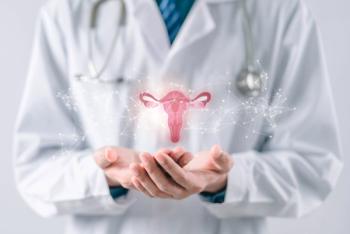
TO EXCISE OR NOT TO EXCISE
Many options are currently available to treat the symptoms of endometriosis. Of these options, surgery is the only one that actually removes or destroys the endometriosis itself. There seems to be a fair amount of confusion surrounding the issue of which surgical technique (excision, laser vaporization, etc.) is the best method to surgically remove endometriosis.
Many options are currently available to treat the symptoms of endometriosis. Of these options, surgery is the only one that actually removes or destroys the endometriosis itself. There seems to be a fair amount of confusion surrounding the issue of which surgical technique (excision, laser vaporization, etc.) is the best method to surgically remove endometriosis. Depending upon their background and training, different surgeons will have different philosophies on how to best remove the endometriosis. I will discuss the pros and cons of the various surgical techniques available for removal of endometriosis, but don't lose sight of the fact that the most important factor in treatment of endometriosis is the technical skill of the surgeon.
I can assure you that it is absolutely true that the surgical techniques of both laser vaporization and excision can effectively remove endometriosis. It is absolutely false that one particular technique (excision or laser vaporization) must be used to effectively treat endometriosis. It may be true that a particular surgeon is comfortable using only one particular type of surgical technique and that if they were to use an alternative surgical technique, the endometriosis may not be completely removed. If a surgeon states that one particular surgical method must be used to treat endometriosis, there is probably one or more of the following factors present:
- the surgeon is proficient in only one surgical technique
- the necessary instrumentation for a particular surgical technique is not available to the surgeon
- overzealous marketing or
- the surgeon has built his or her reputation on one particular technique.
There is nothing wrong with either philosophical differences or a surgeon favoring one particular surgical method. It is important to remember that the goal in surgical treatment of endometriosis is the removal of all of the endometriosis. Realization of this goal is dependent upon the skill of the surgeon and is true no matter which surgical approach or instrument is used by the physician.
Basically, there are three ways a surgeon can remove or destroy the endometriosis. Endometriosis can be excised, coagulated or vaporized.
Vaporization would be like using sandpaper (removing the endometriosis layer by layer) while excision would be like used a knife or scissors to remove the finish. Using the latter technique, one could see how pieces of the furniture might have to be cut out to remove the old finish or at times the carpenter may even tell the owner that the antique is so damaged that it can not be salvaged (hysterectomy). While the CO2 laser has always provided good tissue effect, it did have drawbacks in the past that made it difficult to use. Advances in equipment over the last couple of years have, by and large, eliminated these problems. The first problem with the CO2 laser initially was that it was underpowered. This meant that vaporization of tissue took quite a bit of time. Over the last fifteen years the power of the lasers has increased dramatically. The current generation of lasers provides all the power needed surgically with plenty of reserve. The second problem encountered with the CO2 laser was attachment to the laparoscope. Alignment of the laser beam down the laparoscope required manual adjustment and often required repeated readjustment throughout the surgery. The current coupling devices, which attach the laser to the laparoscope automatically, adjust the alignment of the laser beam and maintain this alignment through out the surgery. The last major hurdle to overcome in using the CO2 laser laparoscopically was smoke production. During laser laparoscopy, the abdominal cavity quickly fills up with smoke, resembling a dense fog. In the past removing the smoke at the same rate at which it was created was a problem. CO2 gas is used to insufflate, or fill up the abdominal cavity, much like filling up a balloon. The CO2 gas was sucked out with the smoke, collapsing the abdominal cavity. In the past, the insufflators (the device which pumps the CO2 gas into the abdominal cavity) were very slow with a maximum rate of 1 liter per minute. As a result most of the operating time was spent sucking out smoke and waiting for the abdominal cavity to fill back up with gas. The current insufflators deliver 20 liters of gas per minute and insufflators which can deliver 30 liters a minute will be available shortly. Thus, what used to take 20 to 30 minutes now takes only one minute. The current state of the art surgical equipment offers the advantages of vaporization with the CO2 laser while eliminating virtually all of the early drawbacks. Unfortunately, there is a lag phase between technology and acceptance and proficiency in the use of the technology. Surgeons who previously discarded the laser and have adopted the exclusive use of excision as their approach to treating endometriosis have not cultivated the surgical skills needed to take advantage of this surgical technique. Other surgeons may possess the necessary skills but may only have access to older inadequate surgical equipment. I feel that a skilled surgeon with state of the art CO2 laser can obtain surgical results unparalleled by other surgical techniques.
The endocoagulator, to the best of my knowledge, is not used much at this time. The best way I can describe the endocoagulator is to envision cutting a 1/4" diameter piece out of the bottom of a clothes iron and glue it on the end of a stick. The endocoagulator is a 1/4" diameter probe (usually about a foot and a half long) that is heated on the end much like an iron. It is used laparoscopically to coagulate the endometriosis. This approach has the same pitfalls as coagulation with electricity as discussed above. The endocoagulator was initially introduced as a device to provide laparoscopic coagulation without the risks associated with electricity.
The harmonic scalpel has been promoted recently as a method for treatment of endometriosis. It is a metal tipped probe that vibrates at a very high frequency creating sound waves that can cut or coagulate. This tool has been presented primarily as an alternative to electrosurgery (many surgeons are worried about the electricity arcing to the bowel and causing damage). The harmonic scalpel is another tool that can be used to treat endometriosis. While I have used this device I do not feel that it offers a significant improvement to the combined use of electrosurgery and the laser.
I hope my description of the various surgical techniques has helped provide you with a better understanding of these techniques. My philosophy on the surgical treatment of endometriosis is that the use of instruments that
vaporize or excise are good techniques, while the use of instruments that coagulate or cauterize are bad surgical techniques. When a large amount of tissue remote from vital structures needs to be removed, excision is a good surgical technique which can shorten the operating time. Laser vaporization provides the precision necessary in the majority of cases to completely remove the endometriosis while leaving the normal tissue and vital structures intact. While it is important to understand the various surgical techniques, the real issue is the surgeon's skill in identifying and removing endometriosis. Just because Doc Jones uses technique X does not make him or her a good endometriosis surgeon.
A good share of my practice is treating patients who have failed treatment with other physicians and thus admittedly I have a bias as a result of the type of patients I see. But it seems that too many women are not receiving adequate surgical treatment. All too often endometriosis is under diagnosed and not completely removed at the time of surgery. At times I see endometriosis missed on the videotapes I review. On occasion, I operate on people who have recently undergone surgery elsewhere but symptoms persist. My surgical pathology report usually reveals endometriosis. Either the endometriosis is growing back in a matter of weeks or months, or it was not removed at the time of the previous surgery. Patients and physicians alike want to see endometriosis properly diagnosed and treated. As a group, women suffering from endometriosis can make a difference in the level of care that is provided by the medical community. If all patients require that their physician videotape the entire surgery, I believe the level of care will rise to desired levels, no matter which surgical technique is used. Videotape documentation of the entire surgery will provide accountability of the facts. If a surgeon states that he/she does not have the equipment to video tape the procedure, then in my opinion, they probably do not have the basic equipment to do the surgery itself. The good surgeons will be proud of the work they are performing and be glad for all to see the "masterpiece" that they have created. Others will not be so inclined. Together you, as patients, can make a difference in the quality of care provided!
This copyrighted material is reproduced with permission from Andrew Cook, M.D. (
Newsletter
Get the latest clinical updates, case studies, and expert commentary in obstetric and gynecologic care. Sign up now to stay informed.









